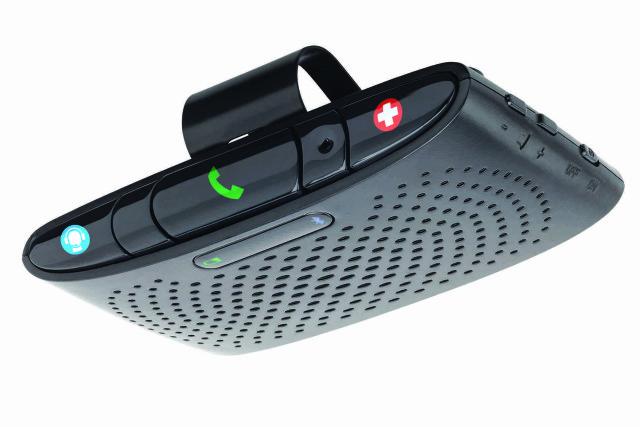
Verizon’s first foray into the telematics business takes the form of a pluggable module for your car. Unveiled Tuesday at the Detroit Auto Show, it slots into the OBD-II port found on virtually every vehicle built after 1996, and provides local wireless in the form of Bluetooth and GPS. Among the capabilities it boasts are diagnoses and early warnings of potential mechanical issues, maintenance reminders, and parking tools to keep track of meter location and time — all thanks to that one little ODB port.
Cellular connectivity and installation of an unobtrusive, visor-level speaker let the service go further. It can connect to Roadside Assistance, for instance, or the A.S.E. Certified Mechanics hotline. Additionally, in the event of a suspected accident, it’ll automatically dial support staff and dispatch EMS.
If any of this sounds familiar, that’s because GM debuted its own aftermarket hardware and subscription, OnStar FMV, to much fanfare in 2011. An intelligent rearview mirror, it retails for $100 and offers comparable functions. Its subscription tiers, however, are significantly more expensive than the competition — basic service starts $19 a month, compared to a flat $15 a month with Verizon Vehicle (plus $13 a month per additional car).
Related: OnStar’s AtYourService to offer retail deals, hotel booking from the driver’s seat
Verizon’s chasing more than car makers with its initiative, though. AT&T, arguably the wireless carrier’s largest domestic competitor, has chosen to work directly with automobile manufacturers to offer cellular service in future cars. On Monday, it announced a partnership with Tesla Motors, Inc., Chevrolet, and Audi. Verizon Vehicle sidesteps manufacturers entirely with a direct-to-consumer approach, the wisdom of which remains to be seen.
Verizon Vehicle will go on sale in early April. The service, now available for pre-order, requires a two-year contract. For the time being, Verizon’s also bundling “substantial discounts” on vehicle rentals, hotels, auto maintenance, and more with purchase.


